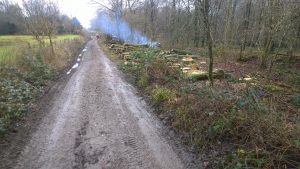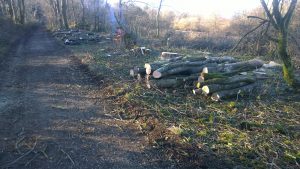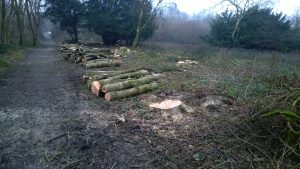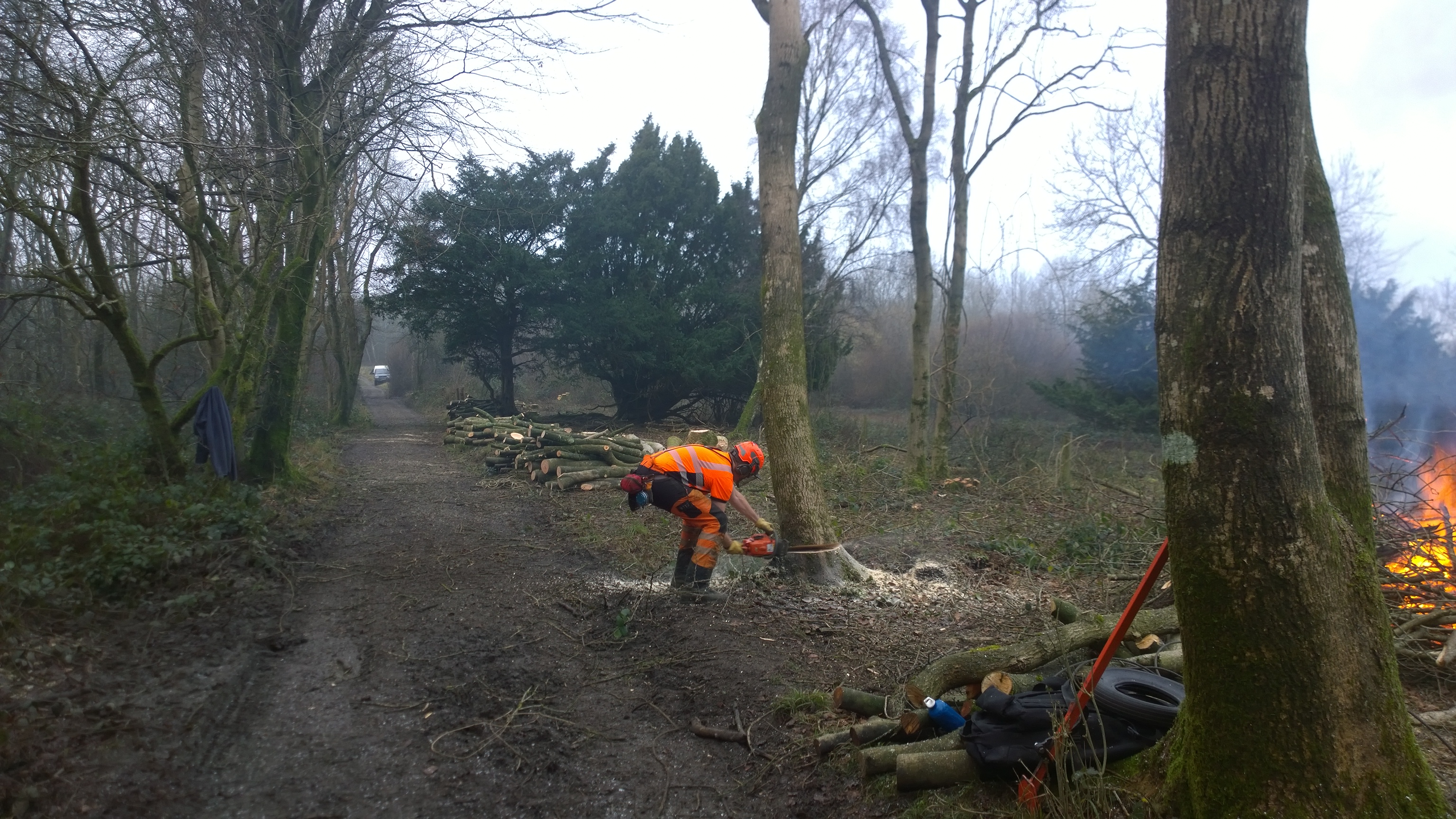
At the start of January, my associate John and I were invited to do some tree felling up on the South Downs above the village of Graffham. We were actually working on a number of narrow sites, all of which were adjacent to the South Downs Way National Trail. The contract was being funded by Butterfly Conservation who are working in partnership with the Graffham Down Trust to create and link habitat which is suitable for a number of rare butterfly and moth species. I was very pleased to be involved in this project as I have been involved in several other projects with Butterfly Conservation in my past life as a countryside ranger.
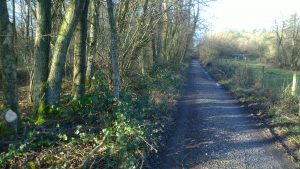
The majority of the trees that we were felling were ash. Ash grows prolifically on the alkaline soils of the South Downs and is the dominant tree in most areas. Perhaps unsurprisingly there was much evidence of Chalara (ash die-back), with many trees either dead or looking decidedly unhealthy.
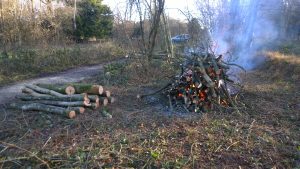
Because the work sites were very narrow, and because of the proximity of the South Downs Way, we had to work carefully and methodically through each area. Most of the trees required a winch, either to bring them back against the lean, or as a brace to aid directional felling.
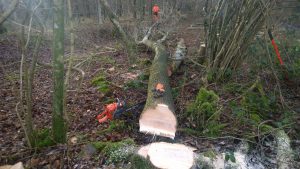
It was a very technical job, but John and I are very experienced in this type of work having done many similar projects over the years. The weather was mainly kind to us too, although we did experience at least one particularly murky day when we could have done with work lights on site!
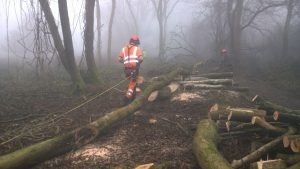
Not all the trees required winching however, being very easy to bring down as the corridor opened up.
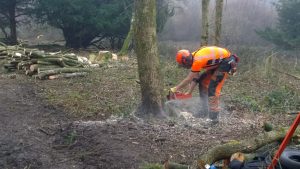
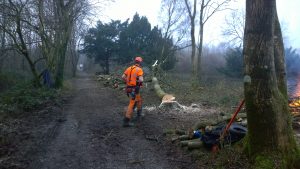
After a total of nine days on site we had finished. It was a really satisfying job to have undertaken. There is now an almost continuous corridor that links up the open chalk grassland and which should enable the rare butterflies and moths to spread much more easily throughout the area. In addition, many dead and potentially hazardous trees have been removed from adjacent to the South Downs Way, and the landowner has a huge amount of ash cord-wood that will eventually go into the estate’s biomass boiler. To paraphrase a much over-used local authority soundbite, it is a win – win situation all round!
